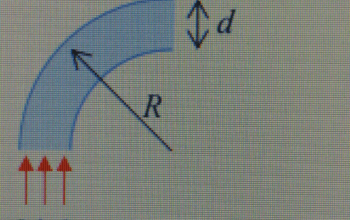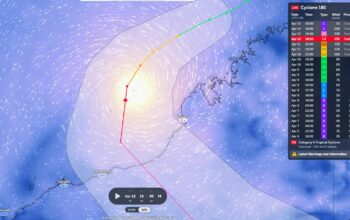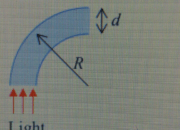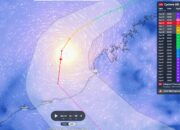In the realm of particle physics, the concept of cyclotron radiation embodies a striking intersection of classical electrodynamics and quantum mechanics. This phenomenon occurs when charged particles, such as electrons, are accelerated in a magnetic field, resulting in the emission of electromagnetic radiation. The intricate relationship between one electron’s behavior and its ensuing electromagnetic signal has profound implications for both experimental physics and theoretical models. This exposition endeavors to elucidate the intricacies of cyclotron radiation—particularly focusing on the dynamics of measurement in real time—and its potential to reshape our understanding of particle interactions.
The foundations of cyclotron radiation are laid within the framework of classical electrodynamics. When an electron traverses a magnetic field, the Lorentz force exerts a perpendicular influence, causing the particle to engage in circular motion. The frequency of this motion, known as the gyrofrequency, is contingent upon the magnetic field strength and the charge-to-mass ratio of the electron. As the electron accelerates in this magnetic environment, it radiates energy in the form of electromagnetic waves, a manifestation of its kinetic alterations. This radiation not only provides insights into the particle’s dynamics but also reflects the underlying physical laws governing charged entities.
Traditionally, the investigation of such radiation has been hampered by the challenge of temporal resolution. The ability to measure cyclotron radiation effectively requires temporal precision that classical detectors often struggle to achieve. However, recent advancements in measurement technology have paved the way for real-time analysis of cyclotron emissions. Novel detection methodologies, including techniques such as time-domain reflectometry and advanced photonic systems, facilitate the capture of signals emitted by individual electrons as they undergo acceleration in magnetic fields. This real-time insight into cyclotron radiation symbolizes a paradigm shift in experimental physics.
One of the pivotal developments in the measurement of cyclotron radiation lies in the application of quantum optics and nanotechnology. By integrating quantum coherence with nanoscale structures, researchers can create devices capable of detecting the minuscule electromagnetic signals produced by single electrons. Such advancements open a plethora of possibilities in the fields of quantum computing and information processing. The capability to monitor cyclotron radiation from a solitary electron in real time could serve as a cornerstone for unraveling complex quantum algorithms and enhancing the fidelity of quantum states.
The implications extend beyond technological advancements; they forge a conceptual re-evaluation of how particles and their interactions are perceived within the framework of physics. The principle of observing one electron and correlating its emitted signal invites a reflection upon the notion of individuality in quantum systems. This perspective challenges the classical paradigm, which often embodies a collective view of particle behavior and interactions. Instead, focusing on a single electron amplifies the significance of its unique trajectory, opening avenues for exploring the idiosyncrasies inherent in quantum mechanics.
Delving deeper into the implications, the real-time measurement of cyclotron radiation allows for enhanced explorative investigations into particle dynamics. The intricacies of radiation emission dynamics could illuminate energy transfer processes in high-energy physics experiments. Observing how individual electrons respond to external stimuli, experts can refine models that predict electron behavior in high-energy colliders and astrophysical environments. This granularity in understanding could facilitate breakthroughs in energy production, material science, and the exploration of fundamental forces.
Another fertile avenue for exploration emanates from the prospect of manipulating cyclotron radiation. Understanding and harnessing cyclotron emissions could lead to innovative techniques for cooling charged particles or creating more efficient magnetic confinement systems in fusion reactors. The manipulation of electromagnetic signals provided by cyclotron radiation paves the way for enhanced control methodologies in plasma physics. It brings forth the potential to harness nuclear fusion as a viable energy source, as the intricacies of particle behavior have wider implications for energy sustainability.
Furthermore, the implications of these advanced measurement techniques extend towards the realms of astronomy and astrophysics. Cyclotron radiation is emblematic of conditions prevailing in astrophysical scenarios, such as those found in pulsars and magnetars. The ability to measure cyclotron radiation from celestial bodies in real time can provide crucial insights into their emission mechanisms, magnetic field structures, and internal composition. This knowledge not only enriches our understanding of such astronomical phenomena but also informs the search for exoplanets and the conditions that may harbor life beyond Earth.
In summary, the practice of measuring cyclotron radiation from individual electrons in real time serves as a cornerstone to a paradigm shift in our understanding of particle physics. This approach encapsulates advancements forged through technological innovation and conceptual leaps in quantum mechanics. The metamorphosis from collective observations to the celebration of individual electromagnetic behaviors of charged particles presents a compelling narrative in physics. Should these advancements continue to culminate, the boundaries of what we understand about the fabric of matter and energy may be dramatically expanded, heralding a new era in scientific exploration.












